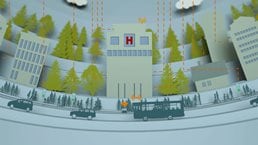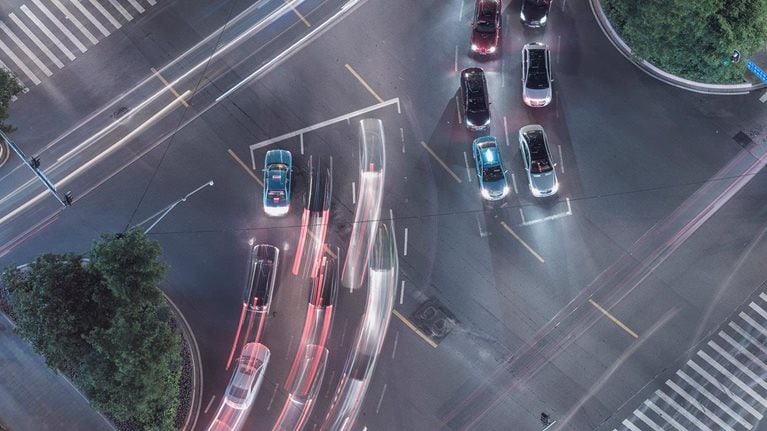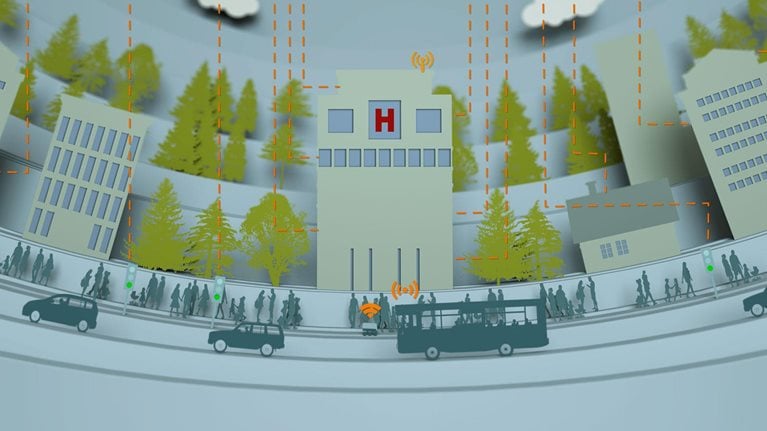Mobility of the future aims to enhance the convenience, reliability, and sustainability of transportation by harnessing new technologies such as the Internet of Things (IoT), automation, and artificial intelligence. But for such transformations to be successful, involved government leaders must identify both the needs of citizens and the vast potential of the ever-evolving technologies.
Stay current on your favorite topics
Seoul Mayor Park Wonsoon is familiar with this undertaking. Wonsoon, who has introduced several future mobility initiatives over the past eight years, named 2019 the Year of Seoul’s Future Transportation. He spoke with McKinsey about his current and planned efforts to innovate the way citizens of Seoul move, including harnessing mobility technologies such as autonomous and connected cars.
McKinsey: What do you see as the biggest transportation challenges that Seoul needs to resolve in the next ten years?
Park Wonsoon: In January 2013, I vowed to transition Seoul from a car-centric city into a people-centric city.
The starting point for transforming Seoul into a people-centric city is improving areas closest to the day-to-day lives of citizens. I view our mandate for the next decade as twofold: first, meeting the complementary goals of creating a walkable community and enhancing the public interest in pedestrian space; second, tackling climate change issues, such as fine dust particles, while preserving the city’s nature, history, and culture.
I have worked to make Seoul a city that respects the walking rights of all citizens by creating spaces such as Sinchon’s pedestrian- and bike-only street, an exclusive zone of the street Yonsei-ro solely for public transportation, the child-friendly A.Ma.Zone safe street, the Seoul Trail and urban walking trails, and the Seoullo 7017 pedestrian path.
To combat fine dust particles surging to emergency levels, we are planning to limit old diesel vehicles on the roads and switch to green cars, including hydrobuses and electric vehicles. We also designated the area contained by Seoul’s 700-year-old Fortress Wall as a Green Transport Promotion Zone—an area that prioritizes sustainable transport such as walking, biking, and electric vehicles. Higher-emission vehicles, such as old diesel cars, are barred from entering the zone. And we are establishing electric buses, pedestrian zones, and public transport facilities (such as a bicycle rental center) to encourage cleaner modes of transport.
McKinsey: What are Seoul’s primary key performance indicators for urban mobility?
Wonsoon: Our approach to mobility is based on the rights of citizens and sustainability. Citizens want convenient, reliable, and diverse personal mobility choices, including bicycling, and they consider pedestrian right-of-way as a basic part of human dignity. Seoul is considering ways to improve citizens’ quality of life in these ways and create a city that empowers people and respects their safety and civic convenience.
For example, we are currently carrying out the Special Smart City Zones project in two autonomous districts in Seoul: Seongdong-gu and Yangcheon-gu.1 In Seongdong-gu, smart crosswalks have sensors for detecting movement that trigger flickering lights along the crosswalk to help draw pedestrians’ attention to the safety line and traffic signals. And drivers will see the lighted crosswalk from a distance, giving them more time to slow down. In Yangcheon-gu, IoT services—such as one service that uses artificial intelligence to reserve parking spaces for people with disabilities—have been launched to bring on-the-ground services directly to where people actually need them.
Our subindicators thus include the number of traffic fatalities, public bicycles, car-free streets, and secured parking lots in residential areas; public transit user satisfaction; and air quality.

Smart cities: Digital solutions for a more livable future
McKinsey: How are Seoul’s leaders using technology to manage and improve urban mobility?
Wonsoon: Technology has been a priority in Seoul’s government since the 1960s; thus, it isn’t surprising that city leaders are committed to creating smart transportation.
As part of our transportation initiative, we are installing 50,000 IoT sensors across the entire city. This initiative includes a parking system where parking availability can be checked in real time through IoT technology, and a taxi service that connects the driver and the passenger by predicting real-time taxi demand through artificial intelligence. We are also building an integrated control center for processing administrative services such as toll collection, payment, and management. By harnessing smart security cameras and deep learning, we will automate simple tasks that previously relied on the human eye, thus increasing service efficiency.
On another note, Seoul is using technology to transition to an environmentally friendly and sustainable transport system. For example, the city is making efforts to manage transport demand and improve air quality by managing the total traffic volume and using information and communications technology to restrict high-emission vehicles.
The city will enhance the level of services by applying connected-car technology. We are also planning to launch a connected-car pilot on 1,600 city buses this October and develop the world’s first all-in-one platform to create a safer transportation culture. The all-in-one platform integrates the individual devices that had been installed on buses for operation management, electronic traffic cards, driving history records, 5G capability, vehicle-to-everything (V2X) connectivity,2 and advanced driver-assistance systems. The platform provides data about unexpected events on the road, including jaywalkers, improperly passing cars, and accidents related to traffic signals and crosswalks.
McKinsey: What concrete preparations are Seoul’s leaders making in line with the deployment of autonomous cars?
Wonsoon: The biggest change in urban life for the future smart city is probably going to be autonomous driving. Autonomous driving will be a trigger point and a catalyst in transforming not only the physical landscape of the city but how people, technology, and capital are connected.
This month, we will complete the world’s first test bed for 5G convergence with autonomous driving at Sangam Digital Media City. It is the only test site in the world that supports autonomous driving with 5G and V2X technology on public roads. We will run 5G network–based driverless buses, and various startups will test their technologies here.
We have applied to register this area as a “specialized complex for automotive driving and 5G smart city” with South Korea’s Ministry of Land, Infrastructure and Transport, and we plan to apply for regulatory exemptions that will dedicate this area for testing autonomous driving. We expect the site to improve the competitiveness of domestic companies involved in autonomous driving, and we believe that public–private partnerships from the testing stage are important for advancing user-centric public services.
McKinsey: How are Seoul’s leaders encouraging citizens to participate in improving urban mobility?
Wonsoon: To develop information and communications technology–based services, we have launched the “public–private partnership for a smart city” project where various players—including citizens, businesses, and experts—can collaborate. This project harnesses an open platform to allow these players to brainstorm innovative ideas and solutions, from business development to implementation.
Ultimately, innovation in urban mobility must address the changes to citizens’ lives that will come in the future. For the past eight years, the Seoul Metropolitan Government has come up with new, exciting solutions through experiments together with its citizens in urban centers and on the streets. Now, at this turning point, Seoul will once again seek solutions together with its citizens, promoting cooperation not only with other districts but with cities around the world.

